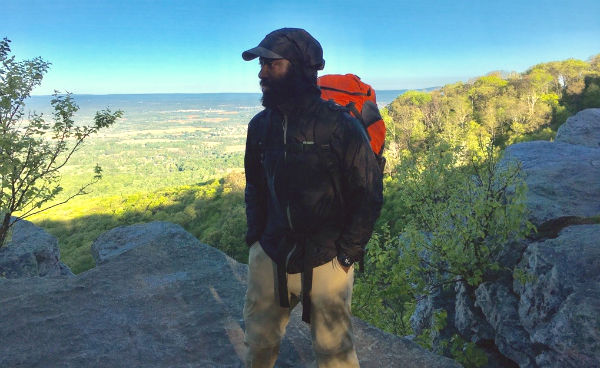 In this picture from May, I am on a hike: 60 miles of the Appalachian Trail. It’s my third year in a row, and so far I’ve done about 180 miles of the trail’s 2,190 miles. It stretches from Georgia to Maine and every year is a new adventure with challenges all along the way.
In this picture from May, I am on a hike: 60 miles of the Appalachian Trail. It’s my third year in a row, and so far I’ve done about 180 miles of the trail’s 2,190 miles. It stretches from Georgia to Maine and every year is a new adventure with challenges all along the way.
The health benefits of exercise such as hiking are many. Regular physical activity can help control weight, increase muscle and bone strength, improve mental health, increase longevity and reduce the risk for heart disease, cancer, and diabetes.
But most people don’t hike the Appalachian Trail; they get their outdoor exercise closer to home. Living in a neighborhood that supports physical activity is key. Ideal communities are walkable, meaning that they are safe from crime and street traffic, and that they have places to go, such as parks and recreation centers, grocery stores and retail spaces.
Cities with walking trails and public art installations are all attractive destinations that make community members more active. But not everyone lives in a place that promotes physical activity. And this has significant consequences for health.
Mapping Community Health
I am an epidemiologist and I research how people access resources in their neighborhoods for overall well-being. What I’ve found is that some neighborhoods are ideal for physical activity and some are not. And those that are not tend to be home to low-income residents, and those residents are predominantly black or Latino.
In general, communities of color in the U.S. are less likely to be in close proximity to parks and green spaces. Black and Latino neighborhoods are more likely to lack recreational facilities for physical activity.
A history of discriminatory policies and practices may still influence why people in communities of color do not access outdoor parks and recreation spaces in the same way that whites do.
Redlining and Jim Crow
You may be familiar with the story of redlining in the U.S. It’s highlighted brilliantly in Ta-Nehisi Coates’s article “The Case for Reparations” in The Atlantic magazine. From the 1930s through the late 1960s, the Federal Housing Administration used race and ethnicity to determine mortgage eligibility in communities. Areas that were predominantly black, which were outlined in red on a map, were not recommended as desirable places for home loans. Predominantly white communities were considered more acceptable for investment.
This is only one example in a long line of exclusionary practices limiting the access by blacks to community resources and physical activity.
The Jim Crow era, which started in the 1870s and ran well into the 1960s, was a period of enforced segregation in most places in the U.S.—and that extended to our national parks, and state and city recreational facilities, like pools and playgrounds. For people of color, accessing these spaces came with considerable risk including physical harm. This context is important when trying to understand why people of color don’t spend as much time in outdoor spaces as their white counterparts.
Understanding how easy or difficult it is to exercise where you live is only one part of the picture. The history of segregation, intimidation, and policy driven disinvestment provides context.
Lessons from the Trail
What I’ve learned from community residents and the people I meet on the research trail is that there are many people with the desire to be active in their neighborhoods and cities—but they don’t have the means.
A certain amount of stability in one’s life is needed to prioritize healthy behaviors like exercising, with a stable place to live being primary. State and federal housing subsidy programs exist, but they are not meeting the demands for affordable housing nationwide. Only a quarter of all residents in need of any type of housing assistance receive it.
And there are those who are in unstable housing. It’s hard to make exercise important to your life when you pay more than 30 percent of your household income in rent, you move homes several times a year, or you are working long hours at multiple locations and rely on public transportation.
Ironically, many residents of under-resourced communities who advocate for improving their neighborhoods find themselves priced out after fighting hard for amenities and safe places for recreation. A recent podcast called “There Goes the Neighborhood” tells the story of gentrification in New York’s Brooklyn neighborhoods. It is an eye-opening account of how that process involves the entanglement of race, racism, money, and ‘progress,’ keeping the American Dream beyond the reach of black residents living there.
All over New York City, rent is outpacing wages most certainly leading to the high rate of homelessness, reflecting families’ struggle to maintain decent housing.
This must change.
First Steps
There are many efforts to increase access to the outdoors for communities of color. For instance, groups such as Outdoor Afro and Latino Outdoors use online and social media to link people in communities of color across the country to meet up for outdoor adventures together.
Government and society can promote activity in our public spaces for people of color. We need to be more intentional about how we do it and recognize the history and barriers involved. If we do so, society can create a trail to better health for all.

